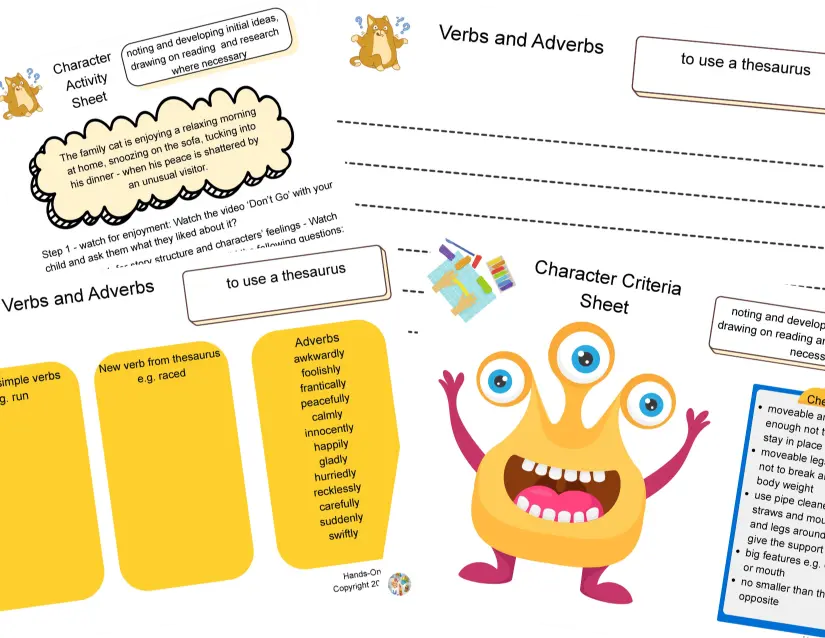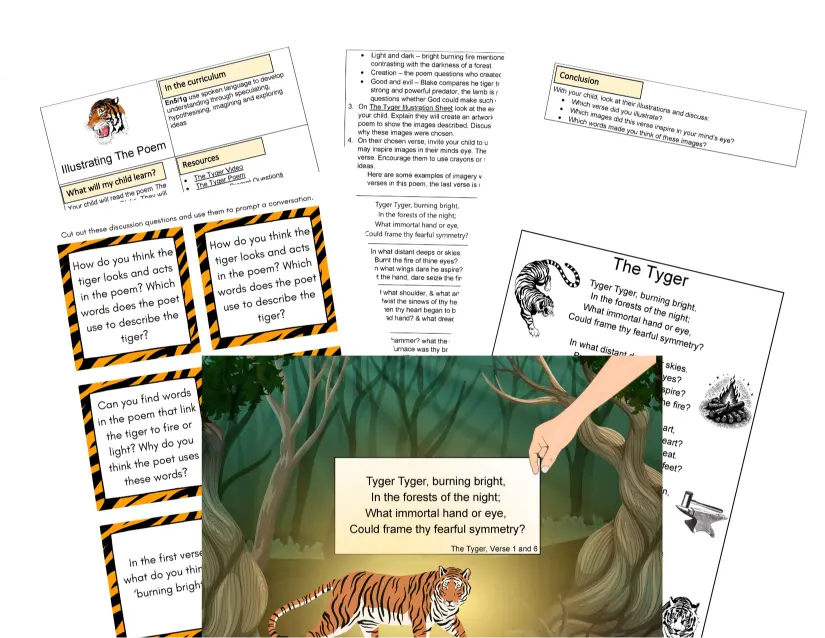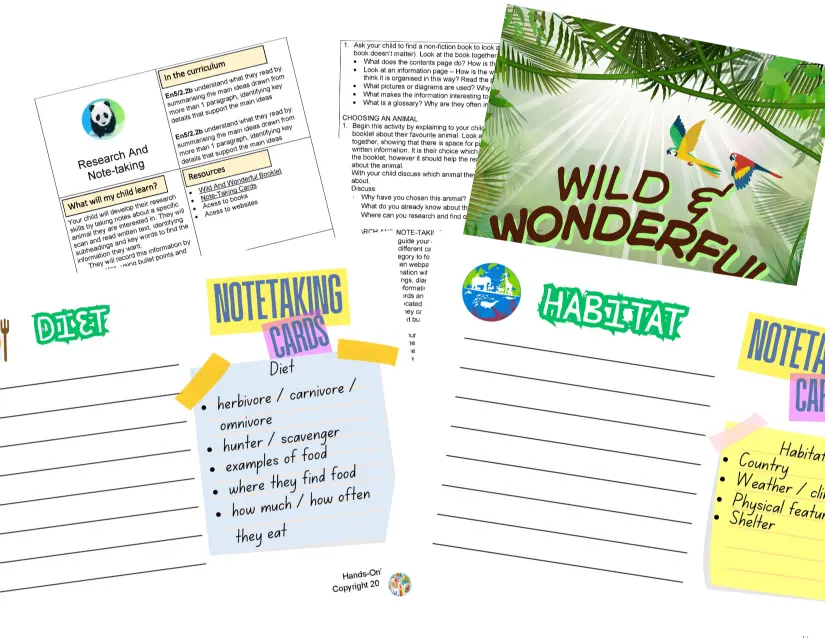
A Deeper Look at What to Expect in Year 5 English
Hands-On Education provides a comprehensive overview of the Year Five English curriculum, aimed at home educators and primary school teachers. It focuses on key areas such as reading, writing, spoken language, and grammar. In reading, students engage with a variety of texts, including fiction and non-fiction, and learn to infer character emotions and discuss figurative language. Writing skills are developed through exercises in spelling, grammar, and narrative construction, emphasizing neat handwriting and effective use of language tools like dictionaries. Spoken language activities encourage students to articulate thoughts clearly and engage in collaborative discussions. The curriculum also covers grammar and punctuation, teaching students to use commas for clarity and understand formal writing structures. These activities are designed to build on previous learning and prepare students for more advanced studies in subsequent years.
What are some of the key areas covered in English at different year levels within Year Five?

In Year 5 English, students typically cover several key areas across reading, writing, and spoken language. Here are some of the main focus points:
Reading
- Reading a wide range of fiction, poetry, plays, and non-fiction texts, including both modern and classic literature
- Preparing poems and plays for performance, focusing on intonation and volume
- Inferring characters' feelings from their actions and justifying inferences with evidence
- Discussing how authors use figurative language
- Distinguishing between fact and opinion
Writing
- Using prefixes, suffixes, and understanding guidelines for adding them
- Spelling words with silent letters and more difficult homophones
- Using dictionaries and thesauruses
- Employing adverbs and adverbials to explain how something is being done
- Writing with neat, legible handwriting and increasing speed
- Using brackets, dashes, or commas to indicate parenthesis
- Selecting appropriate grammar and vocabulary
- Describing settings, characters, and atmosphere in narratives, integrating dialogue
- Structuring texts with organizational devices like paragraphs, headings, and bullet points
- Assessing and improving the effectiveness of their writing
Spoken Language
- Listening and responding appropriately to adults and peers
- Asking relevant questions to extend understanding and knowledge
- Using strategies to build vocabulary
- Articulating and justifying answers, arguments, and opinions
- Giving well-structured descriptions, explanations, and narratives for different purposes
- Participating actively in collaborative conversations
- Using spoken language to develop understanding through speculation and exploration of ideas
Grammar and Punctuation
- Using commas to clarify meaning or avoid ambiguity
- Learning to use relative clauses and modal verbs
- Recognizing vocabulary and structures appropriate for formal speech and writing
- Using passive verbs and expanded noun phrases
These areas are designed to build upon skills learned in previous years and prepare students for the more advanced work they will encounter in Year 6 and beyond.
How can I help my child improve their persuasive writing skills?

To help your child improve their persuasive writing skills, you can start by teaching them the standard format for persuasive writing. This typically includes a clear position statement, supporting reasons, ethical considerations, emotional appeals, and a strong conclusion. Introduce these elements and help your child understand how to organize them effectively in their writing.
Providing pre-writing organizers can be a valuable tool to help your child plan their persuasive pieces. These organizers can include spaces for the main argument, supporting reasons, counterarguments, and evidence. Using these tools helps children structure their thoughts before they begin writing, making the process less daunting and more organized.
Teaching your child to use transition words and persuasive language can significantly improve the flow and convincingness of their writing. Encourage them to incorporate words like "therefore," "moreover," and phrases such as "it stands to reason that" or "according to research" into their work. This not only makes their writing more cohesive but also more persuasive.
Engaging in creative writing activities can make the process more enjoyable and purposeful for your child. Connect writing tasks to their interests - for example, if they like Minecraft, have them write a persuasive letter arguing for Minecraft lessons in school. Using humour and relating writing to everyday objects can also make the process more engaging and fun.
Providing constructive feedback is crucial for improvement. Offer specific comments on areas such as organization, clarity, word choice, and sentence structure. This feedback helps your child identify their strengths and areas where they can improve, guiding their development as a writer.
Finally, encourage regular reading of various genres to expose your child to different writing styles and expand their vocabulary. Discussing stories and characters can help develop critical thinking skills, which are essential for persuasive writing. By implementing these strategies, you can help your child develop stronger persuasive writing skills while making the process engaging and enjoyable.
What are some effective hands-on ways to encourage my child to read more fiction and non-fiction texts?

Here are some effective hands-on strategies to encourage your child to read more fiction and non-fiction texts:
- Let Them Choose: Allow your child to select their own books, whether fiction or non-fiction. This autonomy fosters a sense of ownership and excitement about reading. Consider organizing a mini-library at home with a variety of genres easily accessible at their eye level.
- Connect Fiction with Non-Fiction: Introduce non-fiction texts that relate to themes or topics found in their favoUrite fiction books. For example, if your child enjoys a story about dinosaurs, follow it up with a non-fiction book about dinosaurs to deepen their understanding and interest.
- Use Books to Answer Questions: Encourage your child’s curiosity by using books as tools to answer their questions. If they express interest in a topic, help them find relevant non-fiction materials that explore those questions further.
- Explore Different Non-Fiction Types: Expose your child to various forms of non-fiction, such as biographies, how-to guides, and narrative non-fiction that reads like stories. This diversity can make non-fiction more engaging and relatable.
- Interactive Reading Sessions: Make reading interactive by asking questions and encouraging discussions about the content. This not only enhances comprehension but also helps develop critical thinking skills as they analyze what they read.
- Utilize Visuals: Choose non-fiction books with appealing illustrations or photographs. Discuss these visuals with your child to spark interest and enhance understanding of the text.
- Incorporate Real-Life Connections: Help your child connect what they read to real-life experiences. For instance, if you read about animals in a book, visit a zoo or watch a documentary together to reinforce their learning.
- Create a Reading Routine: Establish regular reading times where both you and your child can enjoy books together. This shared experience can be enriching and encourages them to explore different genres without pressure.
- Visit Libraries and Book Shops: Regular trips to libraries or book stores can expose your child to new titles and genres, allowing them to discover books that pique their interest in both fiction and non-fiction.
- Encourage Role Models through Reading: Introduce your child to biographies of inspiring figures in fields they are interested in, such as science or sports. This not only provides knowledge but also serves as motivation for them to pursue their passions.
By implementing these strategies, you can create an engaging reading environment that nurtures your child's love for both fiction and non-fiction texts.
How can I support my students in understanding and using figurative language in their reading?

To effectively support your students in understanding and using figurative language in their reading, begin with explicit instruction. Introduce different types of figurative language, such as similes, metaphors, personification, hyperbole, and idioms. Utilize anchor charts or posters that define each type and provide examples. This foundational knowledge is essential before students can identify and apply these concepts in their reading and writing.
Using mentor texts is another effective strategy. Select strong texts that prominently feature figurative language and read them aloud to the class. Pause during the reading to discuss the figurative expressions used by the authors. Ask students questions like, "What does this figurative expression mean?" and "How does it enhance the story?" This encourages deeper thinking and contextual understanding of how figurative language contributes to the overall narrative.
Incorporating poetry into your lessons can also be beneficial, as poetry often uses rich imagery and expression. Provide students with a variety of poems and have them hunt for examples of figurative language. Discuss the meanings behind these expressions and how they enhance the poem's impact. This not only helps students recognize figurative language but also fosters an appreciation for poetic forms.
Interactive activities can further engage students in learning about figurative language. Create hands-on stations where they can work in groups to identify and analyze examples. For instance, they could match phrases with their meanings or create graphic organizers comparing literal and figurative language. This collaborative approach makes learning engaging and allows for peer support, reinforcing their understanding through discussion.
Bringing in examples from popular culture can make lessons more relatable. Use song lyrics, movie quotes, or advertisements that feature figurative language to illustrate its relevance in everyday life and media. Discuss these examples with students to show how figurative language is not just a literary device but a part of their daily experiences.
Encouraging creative writing exercises is another way to help students apply what they've learned. Prompt them to describe emotions using metaphors or similes or write short stories incorporating various types of figurative language. This practice solidifies their understanding by allowing them to express themselves creatively while experimenting with different forms of expression.
Finally, provide ongoing opportunities for practice and reinforcement. Encourage students to identify and use figurative language during independent reading time or through homework assignments. Ask them to find examples in their reading materials or create their own sentences using various types of figurative language. By consistently integrating these strategies into your teaching, you can foster a comprehensive understanding and appreciation of figurative language among your students.
What are some fun hands on learning activities to help pupils practice their spelling with silent letters?

Here are some fun hands-on learning activities to help pupils practice their spelling with silent letters.
One engaging activity is sorting games, where students categorize words based on whether they contain silent letters or not. You can create cards with various words and have students read each word aloud before deciding which category it belongs to. For instance, they can sort words like "knight" and "lamb" into a "silent letter" pile, while words like "cat" and "dog" go into a "no silent letter" pile. This activity reinforces their understanding of silent letters through active participation and discussion.
Another interactive option is the Write the Room activity. In this setup, students move around the classroom to find and write down words with silent letters. Place word cards around the room, and as students find each card, they write the word on their recording sheet. This activity not only encourages movement but also engages them with the spelling of silent letters in a fun and interactive way.
Silent Letter Bingo is another exciting game that can reinforce spelling skills. Create bingo cards featuring words with silent letters, and call out definitions or clues instead of the words themselves. This prompts students to identify the correct word on their cards, adding an element of excitement and competition while practising their spelling.
Incorporating technology can also enhance learning through interactive technology centers. Use educational games that focus on silent letters, such as those found on platforms like ABCmouse, which offer interactive storytelling games where students select words containing silent consonants to complete stories. These digital activities keep students engaged while providing valuable practice in recognizing and using silent letters.
Another creative approach is to have students craft their own silent letter books. In this project, each student creates a mini-book that showcases words with silent letters, featuring a word on each page along with an illustration and a sentence using that word in context. This activity allows them to explore the meanings of the words while practising their spelling and writing skills.
You can also organize a silent letters scavenger hunt, where students search for objects or items around the classroom or school that correspond to words with silent letters (e.g., "knife," "thumb"). Once they find an item, they must write down the word and its correct spelling, promoting both physical activity and spelling practice in an engaging way.
Lastly, consider introducing silent letters tic-tac-toe as a fun game where each square contains a word with a silent letter. Students take turns choosing a square and must correctly spell the word in order to claim it for their team. This game encourages teamwork while reinforcing spelling skills in a playful manner.
By incorporating these hands-on activities into your lessons, you can create an engaging learning environment that helps pupils practice their spelling of words with silent letters effectively.
How can children develop their skills in distinguishing between fact and opinion?

Children can develop their skills in distinguishing between fact and opinion through a variety of engaging and practical activities. One effective approach is to put learning in a real-life context. For instance, using a current news story, such as an incident involving an animal at a zoo, can help students understand the importance of facts versus opinions. By discussing tweets or headlines related to the story, children can explore how rumors and speculation can spread misinformation. This context not only makes the lesson relevant but also encourages students to create their own news bulletins summarizing factual information, emphasizing responsible reporting.
Another strategy is to relate learning to children’s lives by using familiar examples, such as playground gossip. By contrasting statements like “It’s going to be amazing!” (opinion) with “An official has confirmed…” (fact), students can better grasp the differences between fact and opinion. Providing vocabulary banks or creating these as a class helps students identify key terms associated with each type of statement, reinforcing their understanding.
Encouraging students to question the source of information is also crucial. Teach them to evaluate whether the information comes from a reputable source, which helps them discern facts from opinions more effectively. For instance, comparing statements from a credible organization with those from unknown sources can illustrate the importance of source credibility in determining what is factual.
To further enhance their skills, students can engage in activities that involve identifying and describing statements as facts or opinions. This could be done through task cards or gallery walks where they examine various statements and classify them accordingly. Additionally, applying their knowledge to reading passages allows them to practice recognizing facts and opinions in context, deepening their comprehension.
As students become more comfortable with the concepts, they can participate in comparison activities where they analyze different texts—both fiction and non-fiction—to identify which passages are based on facts and which are rooted in opinion. This not only reinforces their understanding but also challenges them to think critically about how different types of information influence their perceptions.
Finally, having students write their own passages that include both factual statements and opinions can solidify their learning. By creating two separate pieces—one factual and one opinion-based—they can practice gathering facts and articulating personal beliefs, which enhances both their writing skills and their ability to differentiate between the two.
By integrating these strategies into lessons, educators can effectively support children in developing strong skills for distinguishing between fact and opinion, preparing them for informed decision-making in an increasingly complex media landscape.














